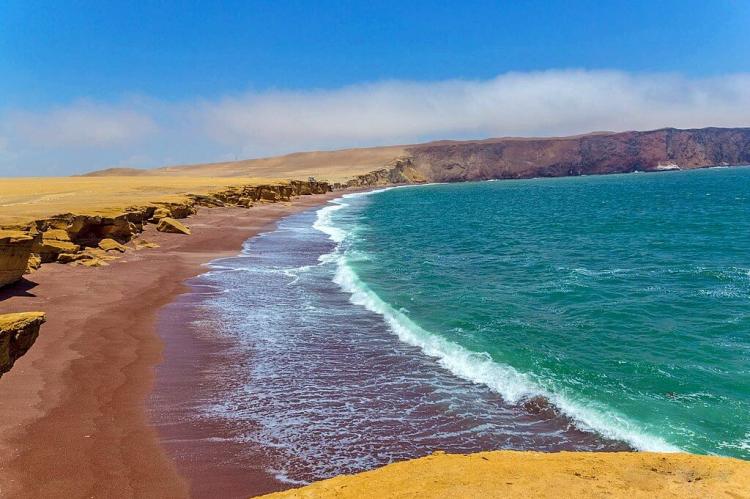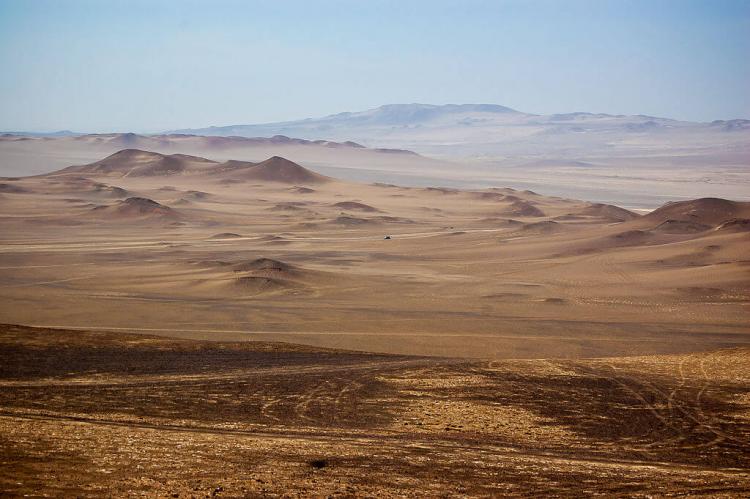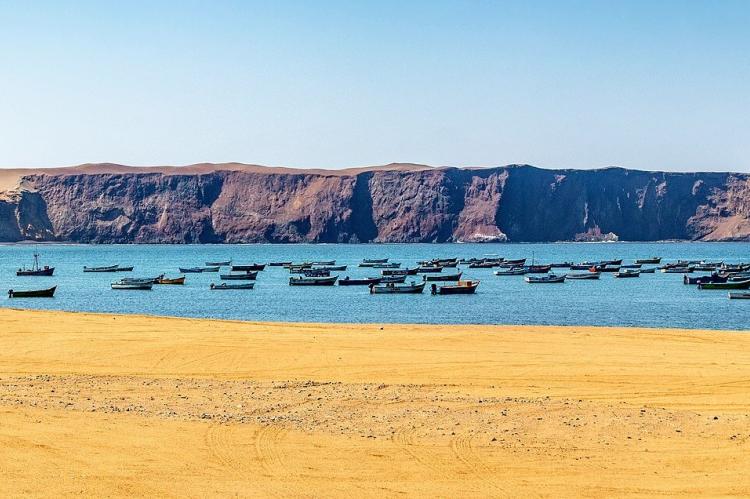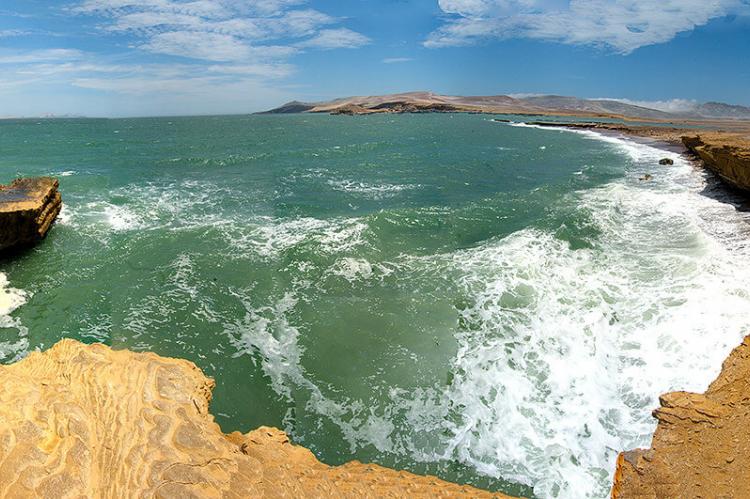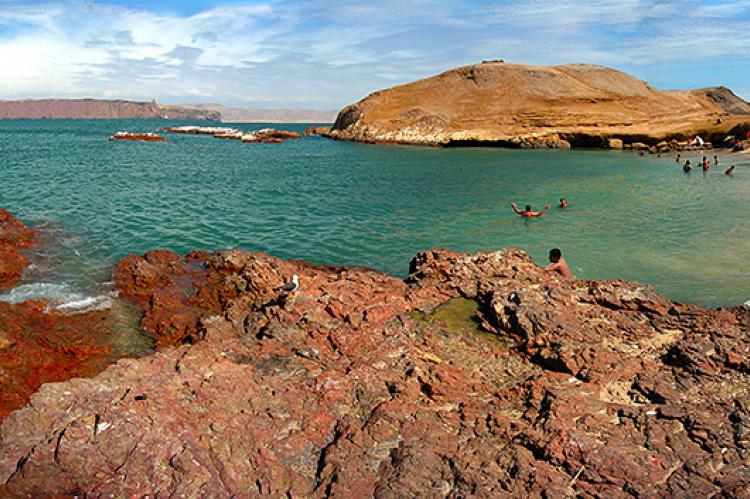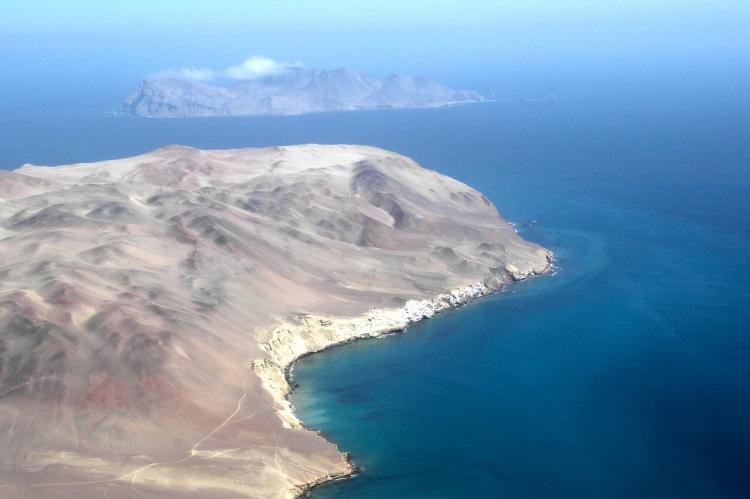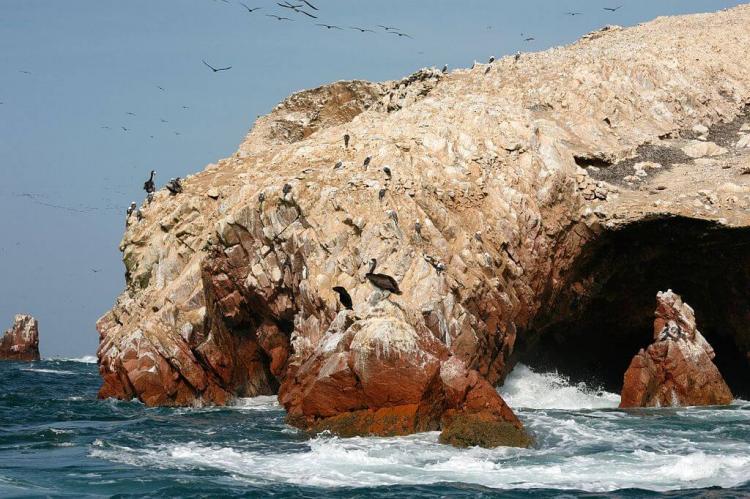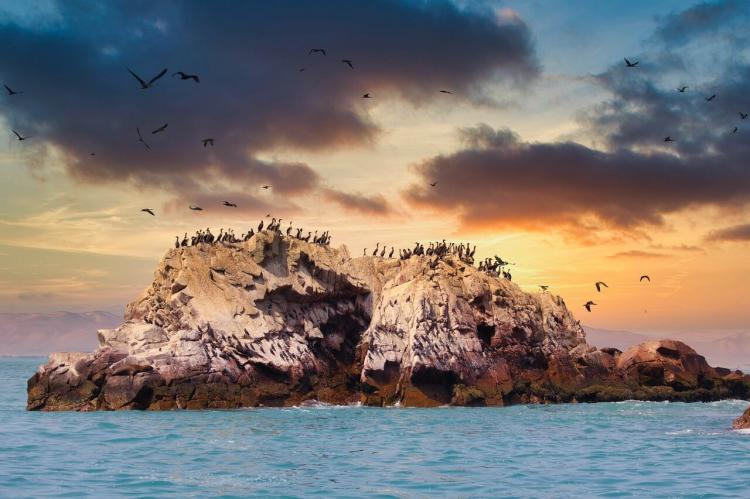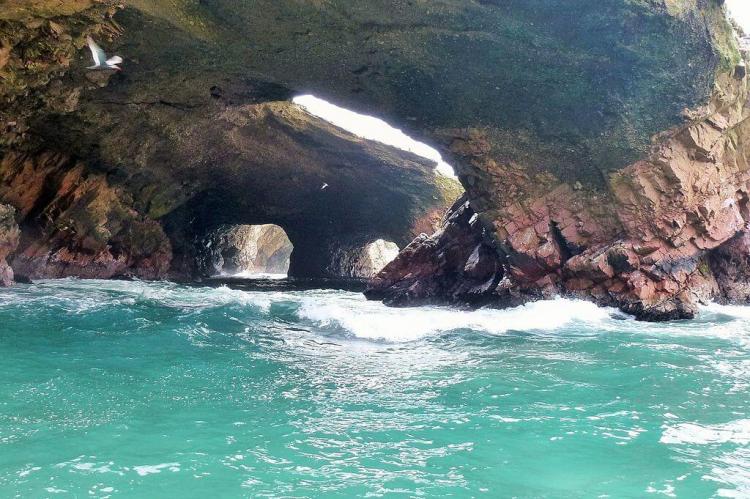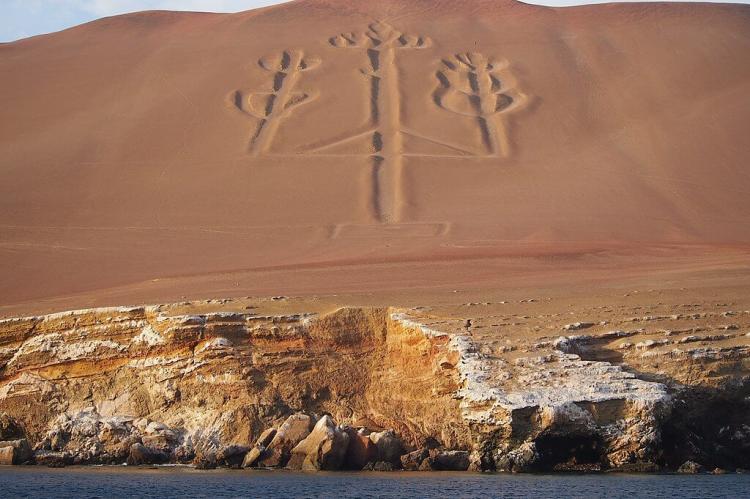Paracas National Reserve: Ballestas Islands, Paracas Peninsula and Paracas Bay (Peru)
The Paracas National Reserve is a protected area in Peru that protects desert and marine ecosystems, including the Paracas Peninsula and Paracas Bay. In addition, the Ballestas Islands are a group of small islands off the coast of the peninsula that are an essential sanctuary for marine fauna.
Paracas National Reserve
The Paracas National Reserve is a protected area in the Ica region, approximately 250 km (155 mi) south of Lima and about 27 km (17 mi) from the town of Pisco, Peru. Established in 1975, the Reserve protects desert and marine ecosystems and includes archaeological remains of the Paracas culture.
The Reserve spans an area of approximately 335,000 ha (827,800 acres), consisting of the Paracas Peninsula, Independence Bay, coastal waters and a desert. This desert extends to the south of Peru, past Punta Caiman. It is a saline desert formed where an ancient ocean once existed. The highest elevation in the Reserve is 786 m.
The Paracas National Reserve is home to over 150 species of marine birds, including Humboldt penguins, cormorants, boobies and pelicans. In addition, it harbors one of the largest sea lion colonies in the world.
The Reserve is in an arid zone with intense local winds known as paracas. Consequently, precipitation is scarce and occurs in winter, mainly on the top of the highest hills. This rainfall is vital to the Lomas ecosystem.
Flora and Fauna
Terrestrial plant species found in the reserve include: Tiquilia paronychoides, Prosopis pallida, Distichlis spicata, Tillandsia spp., Eriosyce omasensis, Geoffroea decorticans, Sesuvium portulacastrum, Cressa truxillensis, Geranium limae, Suaeda foliosa, Oxalis carnosa, etc.
Mammals found in the Reserve include the sei whale, the South American fur seal, the dusky dolphin, the marine otter, the sperm whale, the humpback whale, the South American sea lion, the killer whale, the common bottlenose dolphin, the southern right whale, etc.
Birds found in the Reserve include the Andean condor, the Chilean flamingo, the spotted sandpiper, the oasis hummingbird, the Peruvian pelican, the Inca tern, the black skimmer, the Humboldt penguin, the Guanay cormorant, the Peruvian thick-knee, the Andean swift, the Peruvian diving petrel, etc.
Fish found in the Reserve include the Peruvian hake, the flathead grey mullet, the skipjack tuna, the blue flying fish, the humpback smooth-hound, the copper shark, the Peruvian anchoveta, the eastern Pacific bonito, the Peruvian eagle ray, the fine flounder, the blue shark, the Corvina, the bigeye tuna, etc.
Ballestas Islands
The Ballestas Islands are a group of small uninhabited islands off the southern coast of Peru, near Pisco. Mainly composed of rock formations and covering an estimated 12 ha (30 acres), these islands are an essential sanctuary for marine fauna.
These uninhabited rocky islets are revered for hosting the ideal habitat for various species of birds and an eclectic mix of larger wildlife like seals, sea lions and Humboldt penguins.
The Ballestas Islands are not within the Paracas National Reserve. Instead, they belong to the Guano Islands, Islets and Capes National Reserve System. This expansive Peruvian Reserve includes the guano islands like the Ballestas and their ecosystems all along the coast from Tacna to Piura.
Conditions created by the Humboldt Current enable the animal inhabitants of the Ballestas and the nearby Paracas Peninsula to thrive. The cold current pulls up water from the ocean floor, bringing lower temperatures and nutrients to the surface. These conditions create an ideal feeding zone for fish, consequently drawing larger predators.
Notable species include the Guanay cormorant, the blue-footed booby, the tendril, the Humboldt penguin, fur seals, sea lions, and other mammals.
Paracas Peninsula
The Paracas Peninsula is a desert peninsula within the boundaries of the Paracas National Reserve. The peninsula is located within the Paracas District of Pisco Province in the Ica Region on the south coast of Peru.
This unusual peninsula may be best known for the Paracas Candelabra, a prehistoric geoglyph nearly 183 m (600 ft) tall created on the peninsula ridge's north face. Pottery nearby was dated to 200 BCE, placing it within the Paracas culture. Its origins and purpose have inspired many theories.
A shipping port was built along the northern peninsula, where deeper water permits larger transport and cruise ships to anchor. The peninsula includes red sand beaches formed from sands eroded from nearby cliffs. A single road from the mainland reaches the port and passes through the Paracas National Reserve.
Paracas Bay
Paracas Bay is a shallow bay located at the southern end of the bay of Pisco. It constitutes an inlet of the Pacific Ocean, with an area of approximately 36 sq km (14 sq mi). It is a semi-enclosed bay with high biological productivity. Ramsar-recognized wetlands characterize the coastal edge of the bay.
Flora and Fauna
Its biological diversity consists of 23 species of polychaetes, 11 species of crustaceans, five species of mollusks, one species of echinoderm, one species of Nemertea, and two species from other groups, such as flatworms and sea anemones.
The southwestern section of the bay constitutes the most important wetland of the Paracas National Reserve. This area is considered an ecosystem that provides shelter, food and nesting places for numerous species of birds that include (among others):
- South American flamingo or parihuana (Phoenicopterus chilensis)
- Peruvian gull (Larus belcheri)
- gray gull (Larus modestus)
- Dominican gull (Larus dominicanus)
- large macá (Podiceps major)
- crow duck (Phalacrocorax olivaceus)
- Peruvian pelican (Pelecanus thagus)
- Peruvian booby (Sula variegata)
- white sandpiper (Calidris alba)
- semipalmated sandpiper (Calidris pusilla)
- western sandpiper (Calidris mauri)
- elegant tern (Sterna elegans)
- arctic plover (Pluvialis squatarola)
- yellow-legged (Tringa melanoleuca)
- Franklin's gull (Larus pipixcan)
- billed pea (Rhynchops nigra)
The underwater world of Paracas Bay is home to an impressive array of sea life, where fish and invertebrates are the most representative taxonomic groups. The most abundant species of fish are represented by
- silverside (Odontesthes regia regia)
- smooth (Mugil cephalus)
- anchovy (Engraulis ringens)
- guitar fish (Rhinobatos planiceps)
- sardines (Sardinops sagax sagax)
Invertebrates such as mollusks and crustaceans that are found here include Synus cymba, Nassarius gayi, Littorina peruviana, Argopectenpurpuratus, Epatus chilensis, Ocypodegaudichaudii, Pagurus edwardssi, etc.
The reptile species found in the bay include the gecko (Phyllodactylus angustidigitus), the Peruvian lizard (Microlophus peruvianus), the black turtle (Chelonia agassizii), the leatherback turtle (Dermochelys coriacea), among others.
Regarding marine mammals, two species of sea lions stand out: the fine (Arctophoca australis) and the chusco (Otaria flavescens). In the mustelid family, a carnivore species is the sea otter or chingungo (Lontra felina).
The presence of dolphins has also been recorded, such as the bottlenose dolphin (Tursiops truncatus) that travels to feed from the mouth of the Pisco River to the El Chaco pier, the common dolphin (Delphinus capensis), the dark dolphin (Lagenorhynchus obscurus) and the spiny porpoise (Phocoena spinipinnis).
This bay contains marine macroalgae, which form forests under the sea and support rich marine biodiversity. The main species of algae are Yuyo (Chondracanthus chamissoi), sea lettuce (Ulva papenfussi), brown algae (Desmarestia peruviana), red algae (Gigartina chamissoi), among others.

